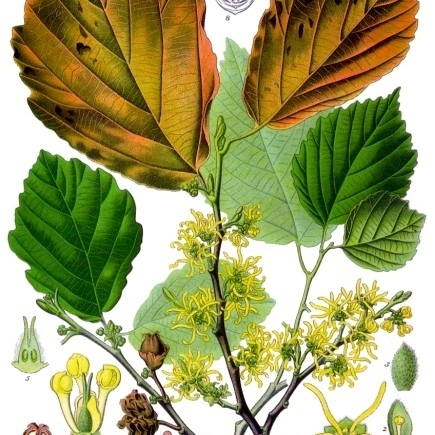Shrubs or small trees, deciduous; branches with 1 prophyll, young branches tomentose; buds naked, tomentose. Leaves petiolate; stipules caducous, leaving small scars; leaf blade thinly leathery or papery, asymmetrical, margin entire or undulate-dentate, venation pinnate, 2 basal lateral veins usually with tertiary veins. Inflorescence capitate, or shortly spicate, axillary, 3–4-flowered. Flowers bisexual. Sepals 4, ovate, pubescent. Petals 4, yellow, greenish or red, straplike, circinate in bud. Stamens 4; filaments short; anthers ovoid, thecae 1-sporangiate, each dehiscing by 1 valve; staminodes 4, alternating with stamens, scalelike, producing nectar. Ovary semi-inferior; ovules 1 per locule; styles very short. Capsules woody, dehiscing above middle by two 2-lobed valves; endocarp loose from woody exocarp. Seeds ellipsoid; endosperm fleshy. 2n = 24.
Fls perfect, 4-merous, with linear pet and small, triangular sep; stamens 4, opposite and much shorter than the sep, alternating with scale-like staminodes; styles 2, short; ovule 1 per cell, suspended, anatropous; capsule half-inferior, pubescent; tall shrubs with toothed lvs, the fls in short-peduncled axillary clusters. 6, N. Amer. and e. Asia.

